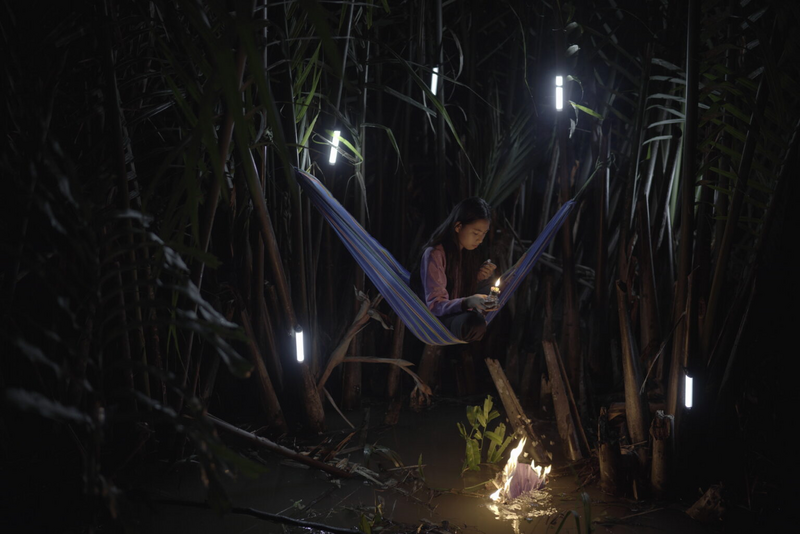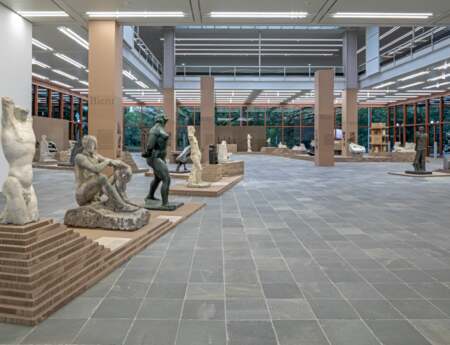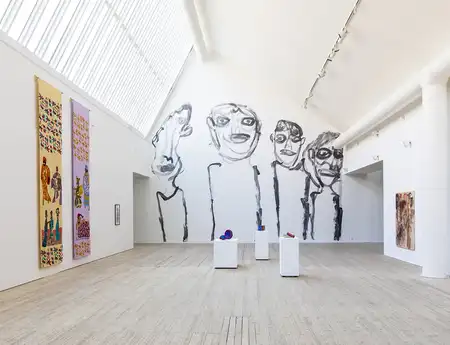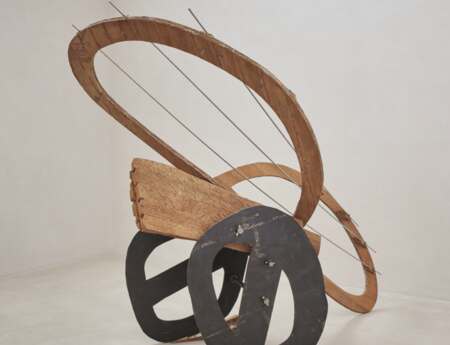Astrup Fearnley Museet
Strandpromenaden 2
0252 Oslo
Norwegen
Between Rivers
A flood is what flows says the etymology, where the flowing is in excess. But it is by flooding that a river constructs its form; form is the remnant of excess, the despair of content, the failure of escape. Riffles, pools, floodplains, meanderings constitute its geometry.
– “A River” by Lisa Robertson
With: Alex Ayed, Hicham Berrada, Anna Boghiguian, Reena Saini Kallat, Zoe Leonard, Cato Løland, Delcy Morelos, Senga Nengudi, Thao Nguyen Phan, Marjetica Potrč, Lala Rukh, James Webb
Between Rivers brings together the practices of contemporary artists who respond to the place of rivers in our lives at a moment when they are being profoundly reshaped by human activity.
While rivers have been an important subject for artists since at least the nineteenth century and are at the center of significant developments in fields as varied as ecology and environmentalism, political organization and activism, and the built environment and architecture, in recent years they have been discussed with an increasing urgency. Reports of the Yangtze, Rhine, and Zambezi Rivers dropping to their lowest levels on record have appeared alongside accounts of atmospheric rivers causing some of California’s worst flooding. Systems that are crucial to the functioning of our contemporary world, such as the production of hydroelectricity, food security, and global transportation networks, are being profoundly impacted. Simultaneously, the recognition of indigenous definitions of rivers and the expansion of scientific and legal ones, are changing what we mean by the term. In 2017, the Māori won a legal battle to have the Whanganui River in New Zealand Aotearoa recognized as a living entity and ancestor. This coincides with contemporary developments in environmental law arguing for nature, including rivers, as a subject.
The artists included in Between Rivers propose new ways of reading and imagining rivers. While many of the works are characterized by modes of expression that are particular to each artist’s practice—perhaps unsurprising given the challenge of representing a subject that is always in motion and always changing form—they are nonetheless related by the image, experience, or process of a river. Several of the works make direct references to the world’s most significant river systems, following and documenting their courses to pose questions about territory and identity, the residue and continuing impact of colonial histories, and the effects of contemporary agricultural techniques. Other practices respond to the subject more obliquely, drawing upon the movement of a river as a methodology for the creation of new work, including new commissions for this exhibition. Several of the works harness the poetic and imaginative possibilities of the subject, suggesting permeable, generous, and interdependent relationships with nature. Finally, the material of a river and what gathers next to it—its liquid body, the soil along its banks, and the plants that grow in that soil—form the material of some of the installations and sculptural objects. The exhibition aims to have multiple, and even competing definitions of the subject, encouraging visitors to form their own opinion on the role of rivers today.
Curated by Owen Martin
A public program will accompany the exhibition, including conversations with artists and leading scholars, a film screening, and the presentation of a performance. In addition to the exhibition itself, these interventions will be documented so that they can be shared via Astrup Fearnley Museet’s multiple digital channels.



